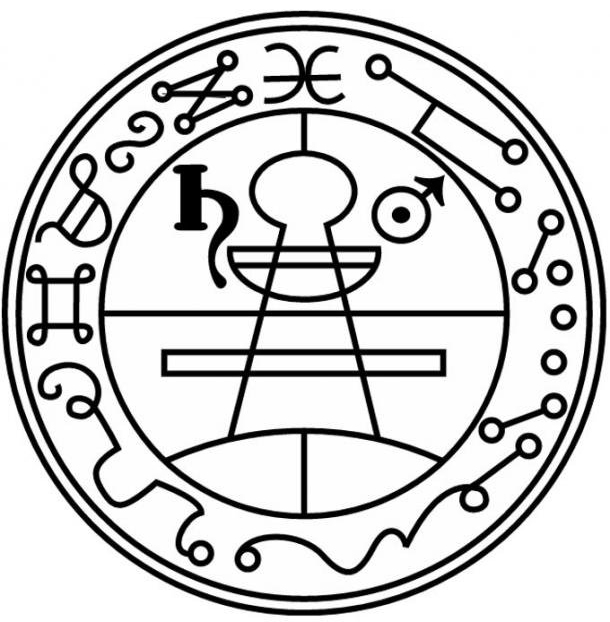Secret Seal of Solomon
The Secret Seal of Solomon, not to be confused with the Seal of Solomon, is a symbol used to control demons.
It was supposedly created by King Solomon when he sealed the 72 Goetic demons into a brass vessel and threw them into a lake in Babylon.
Textual history
The earliest known manuscript referencing the Secret Seal of Solomon is the 17th century Lesser Key of Solomon, although it drew from earlier works which did not include the specific description or functions of the seal.
Function of the seal
King Solomon used the seal to command the 72 Goetic demons in a brass vessel, sealing the container at the top by attaching the seal at its opening. He also used it to gain love and protection in battle. The Lesser Key of Solomon states "neither weapons, nor fire, nor water" could hurt Solomon while he held the seal.
Method for creating the seal
This seal is to be made by one that is clean both inwardly and outwardly, and has defiled themselves with sexual activity for a month, but has in prayer and fasting desired of God to forgive all their sins.
It is to be made on the day of Mars or Saturn (Tuesday or Saturday) at night at 12 o'clock, and written upon virgin parchment with the blood of a black cock that has not had sex with a hen. On this night, the moon must be going from new to full and in the Zodiacal sign of Virgo. Once the seal has been made, it should be perfumed with alum, sun dried raisins dried, dates, cedar and lignum aloe.
Composition of the seal
The central design of the seal bears a resemblance to ancient symbols used by various Mediterranean cultures to depict a man standing with his hands raised in adoration or worship. In their analysis of the seal, Samuel L. MacGregor Mathers and Aleister Crowley determined "the evident desire is to represent hieroglyphically a person raising his or her hands in adoration. Nearly all are stone sepulchral steles, and the execution of them is rough and primitive in the extreme." They based their theory on ancient steles they examined at the Louvre from Constantine and Carthage.
